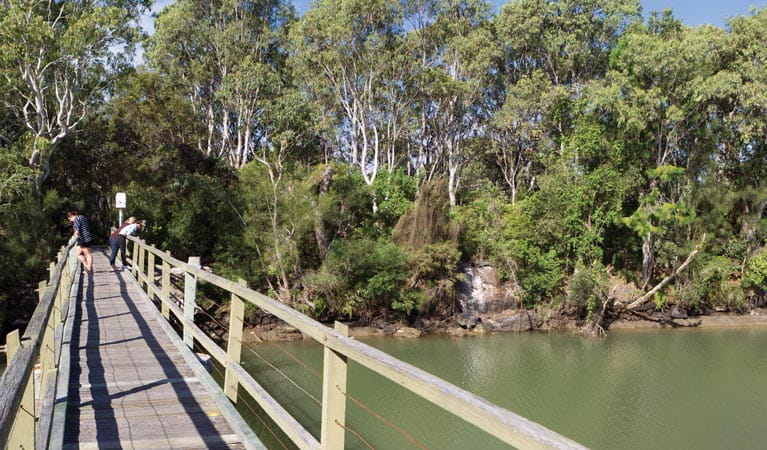Woolgoolga Lake
Coffs Coast Regional Park
Overview
Woolgoolga Lake is a great place for canoeing, kayaking, swimming and birdwatching. Make a day of it - pack a picnic or barbecue to enjoy at this scenic spot.
- Where
- Coffs Coast Regional Park in North Coast
- What to
bring - Hat, sunscreen, drinking water
- Please note
- Read more about Woolgoolga Lake which is managed by Coffs Harbour City Council
- Remember to take your binoculars if you want to birdwatch
Switch to a slower pace of life at Woolgoolga Lake on the north coast. You’ll find a family-friendly picnic area, shielded from the sun by shady eucalypts and paperbarks. It’s the perfect place to enjoy a lazy afternoon, serenaded by waterbirds, children laughing, barbecues sizzling and waves crashing nearby.
The lake is a calm tidal inlet so it’s great for a spot of paddling in a canoe or kayak, swimming and fishing or just floating along on a lilo.
There’s a wealth of resident birdlife to watch. And, if it’s low tide, you can take the short stroll across the mouth of the lake and then onto the beach – it’s almost like walking on water.
Map
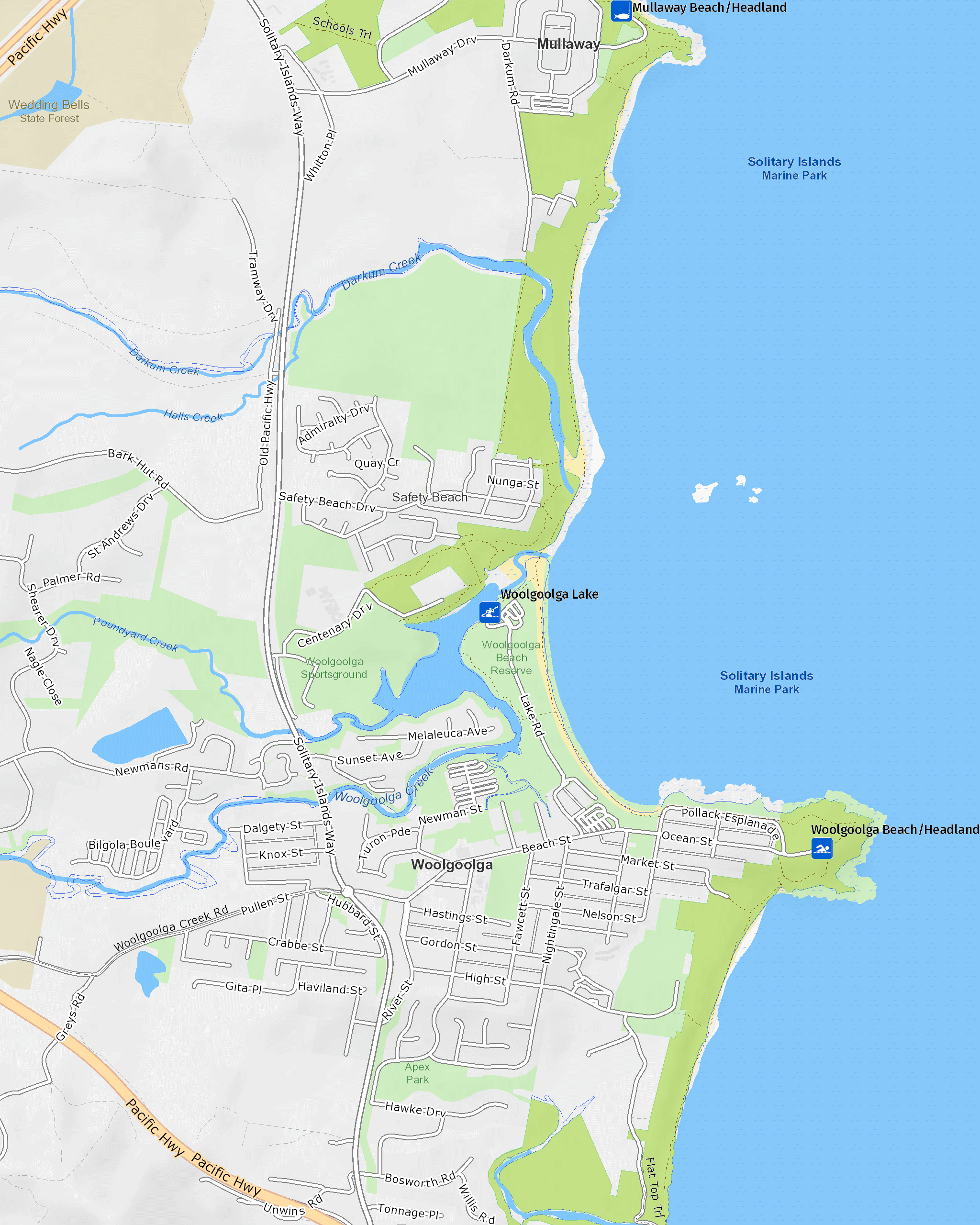
Map legend

Local alerts
For the latest updates on fires, closures and other alerts in this area, see https://www.nationalparks.nsw.gov.au/things-to-do/canoeing-paddling-experiences/woolgoolga-lake/local-alerts
Park info
- in Coffs Coast Regional Park in the North Coast region
Coffs Coast Regional Park is always open but may have to close at times due to poor weather or fire danger.
Visitor info
All the practical information you need to know about Woolgoolga Lake.
Getting there and parking
Woolgoolga Lake is in the north of Coffs Coast Regional Park, just south of Safety Beach. To get there, take Beach Street and then turn onto Wharf Street. This becomes Lake Road. Continue for about 1km, when you’ll see a caravan park, extensive parklands and access to Woolgoolga Lake.
Road quality
- Sealed roads
Vehicle access
- 2WD vehicles
Weather restrictions
- All weather
Parking
Parking is available at Woolgoolga Lake. It can be a busy place on the weekend, so parking might be limited.
Best times to visit
Spring
Head to one of the Park's headlands for stunning coastal views and to watch whales.
Summer
The beaches of the park are your playground - go swimming surfing, snorkling and more.
Winter
A great time to walk the Solitary Islands coastal walk.
Weather, temperature and rainfall
Summer temperature
Average
17°C and 29°C
Winter temperature
Average
5°C and 20°C
Rainfall
Wettest month
March
Driest month
August
The area’s highest recorded rainfall in one day
388.2mm
Facilities
Picnic tables
Barbecue facilities
- Gas/electric barbecues (free)
- Wood barbecues (bring your own firewood)
Carpark
Drinking water
Maps and downloads
Permitted
Fishing
A current NSW recreational fishing licence is required when fishing in all waters.
Pets
You can walk your dog on-lead at this location. See other regional parks in NSW that have dog walking areas.
Dogs are permitted at Woolgoogla Lake - you will need to keep them on a leash at all times and remember to pick up after them.
Prohibited
Smoking
NSW national parks are no smoking areas.
Learn more
Woolgoolga Lake is in Coffs Coast Regional Park. Here are just some of the reasons why this park is special:
Life’s a beach
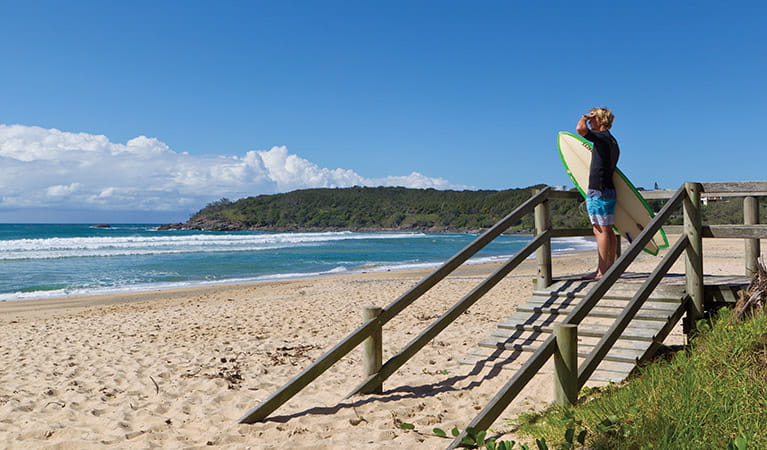
Golden beaches are the park’s premier attraction. Here, everything revolves around the water – whether you’re swimming and surfing in it, or walking and fishing beside it. Spend your days discovering the headland walking tracks, boat ramps, parklands and playgrounds. And no matter where you go, you’re bound to find a perfect spot for a beachside picnic. There are also plenty of dog-friendly areas at Coffs Coast Regional Park – just another of its popular features. Take your dog for a walk along one of the coastal paths, plus, there are several beaches with leash-free zones, meaning your pooch can zip about and enjoy the sand and sea as much as you do. The leash-free area around Corindi and Pipeclay beaches is a local favourite.
- Arrawarra Headland Soak up views of Solitary Islands Marine Park from Arrawarra Headland and Beach near Coffs Harbour. Fishing, surfing, swimming – it’s all here waiting for you to enjoy.
- Diggers Beach Located opposite the Big Banana in Coffs Harbour, Diggers Beach is excellent for surfing and learning to surf, plus fishing, swimming, birdwatching and beach walking.
- Emerald Beach Positioned near Look-at-me-now Headland, 20km from Coffs Harbour, Emerald Beach is a local surfing hotspot. Visit also for fishing or swimming, or for barbecues in the picnic area.
- Mullaway Beach and Headland Head south from Arrawarra to discover beautiful Mullaway Headland and Beach, near Coffs Harbour. Make the most of its picnic area and barbecues, go fishing or swimming.
Whale watchers
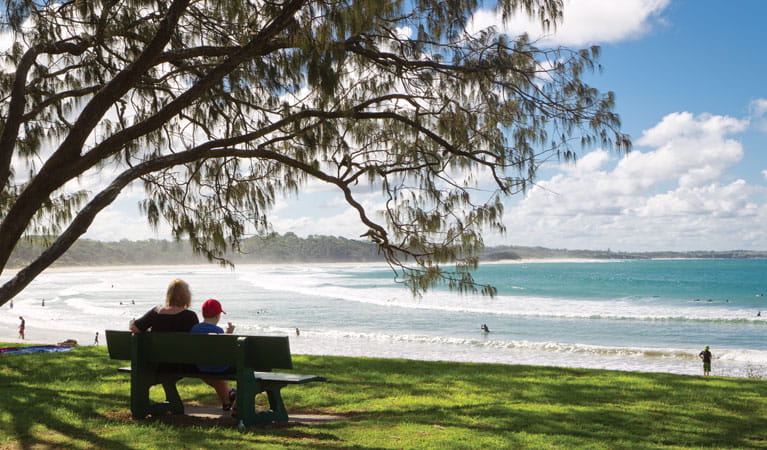
Coffs Coast Regional Park is a fantastic place to enjoy watching these majestic creatures on their long coastal journey. Look-At-Me-Now Headland near Emerald Beach is a great vantage point, but locals agree Woolgoolga Headland is your best bet for glimpsing humpbacks. In fact, it’s also known as ‘Whale Watch Headland’. Plan a trip between June and October to see this inspiring sight.
- Whale watching at Woolgoolga Join our NPWS guides for a free whale watching experience on the Coffs Coast. It's whale watching season – see how many whales you can spot out deep! Great for all ages.
- Woolgoolga Beach and Headland Woolgoolga Beach and Headland has the best whale watching in the Coffs Region, plus great surfing, fishing and picnics and scenic views.
Plants and animals protected in this park
Animals
-

White-bellied sea eagle (Haliaeetus leucogaster)
White-bellied sea eagles can be easily identified by their white tail and dark grey wings. These raptors are often spotted cruising the coastal breezes throughout Australia, and make for some scenic bird watching. Powerful Australian birds of prey, they are known to mate for life, and return each year to the same nest to breed.
-
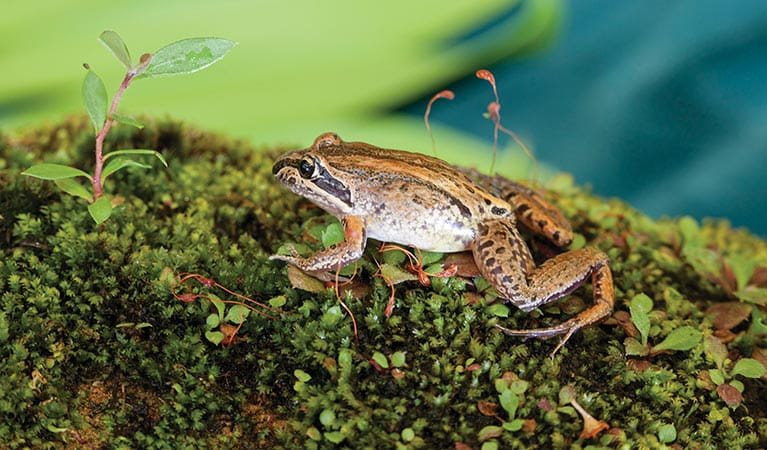
Brown-striped frog (Lymnastes peronii)
One of the most common frogs found in Australia, the ground-dwelling brown-striped frog lives in ponds, dams and swamps along the east coast. Also known as the striped marsh frog, this amphibian grows to 6.5cm across and has a distinctive ‘tok’ call that can be heard all year round.
-
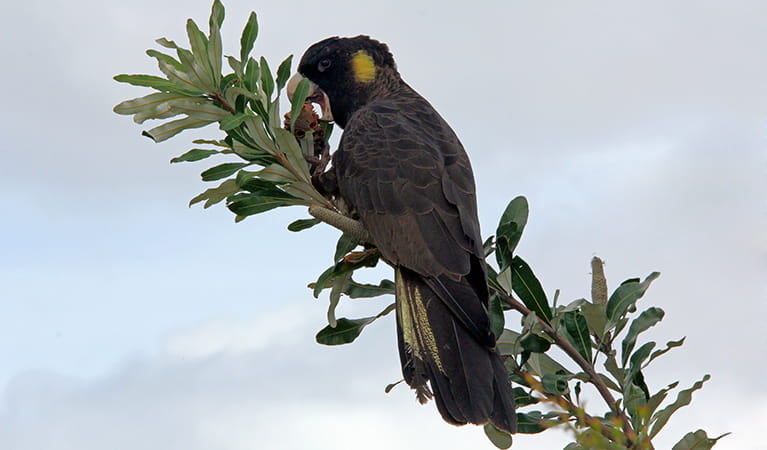
Yellow-tailed black cockatoo (Calyptorhynchus funereus)
The yellow-tailed black cockatoo is one of the largest species of parrot. With dusty-black plumage, they have a yellow tail and cheek patch. They’re easily spotted while bird watching, as they feed on seeds in native forests and pine plantations.
-
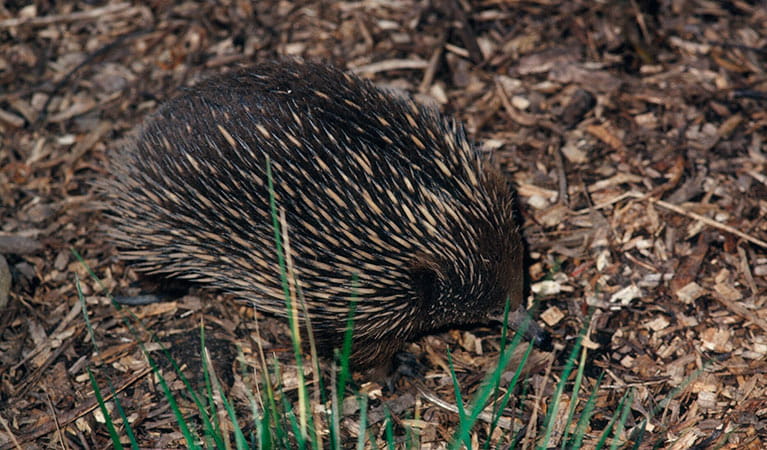
Short-beaked echidna (Tachyglossus aculeatus)
One of only 2 egg-laying mammals in the world, the short-beaked echidna is one of the most widespread of Australian native animals. Covered in spines, or quills, they’re equipped with a keen sense of smell and a tube-like snout which they use to break apart termite mounds in search of ants.
-
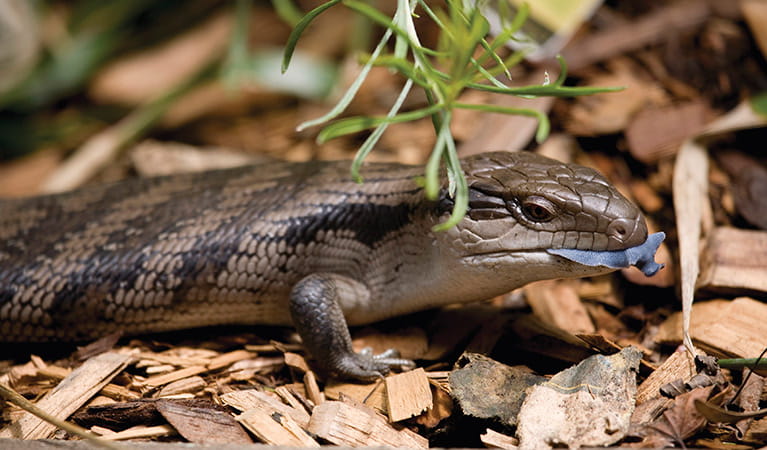
Eastern blue-tongue lizard (Tiliqua scinciodes)
The eastern blue-tongue lizard, one of the largest skinks in Australia, is found throughout most of NSW. When threatened, the eastern blue-tongue lizard displays its blue tongue in a wide-mouthed intimidating show. Not an agile animal, they feed on slow-moving beetles and snails.

